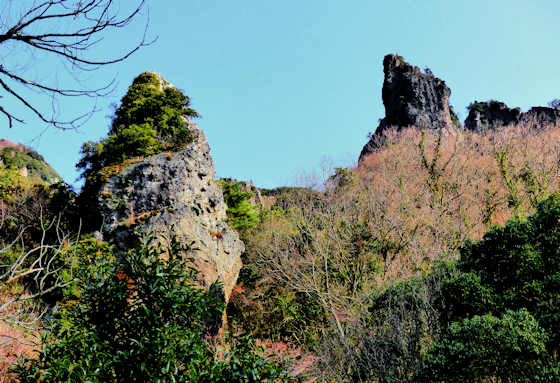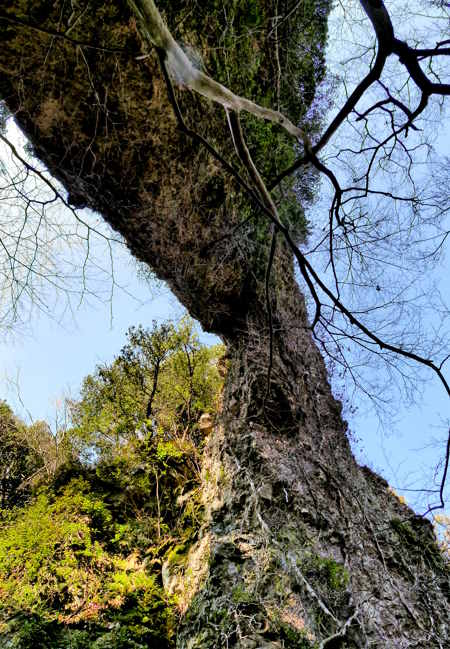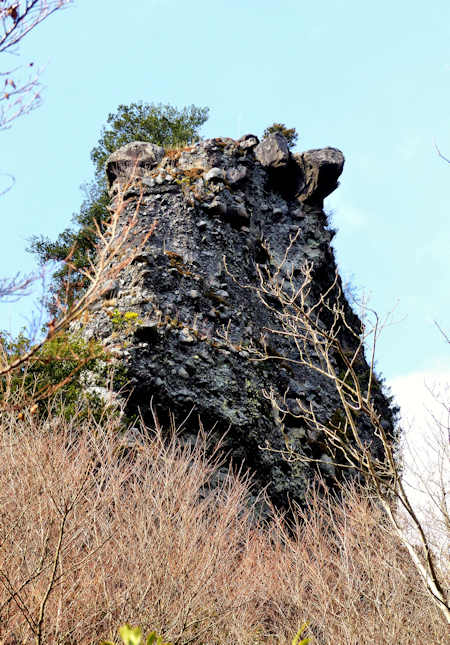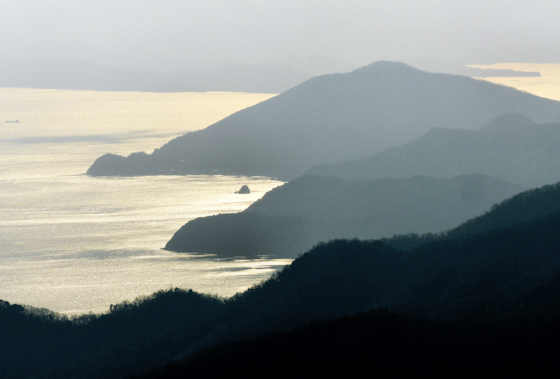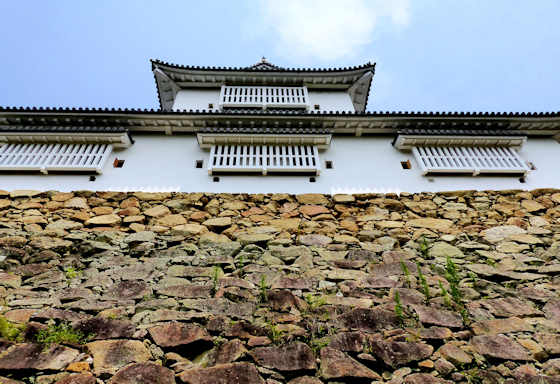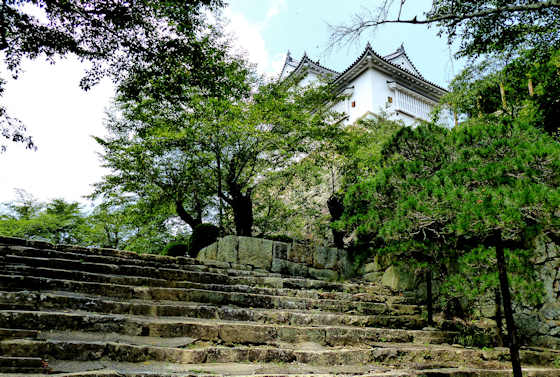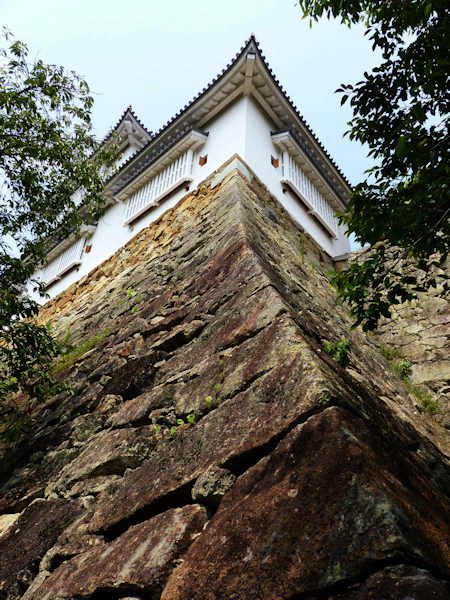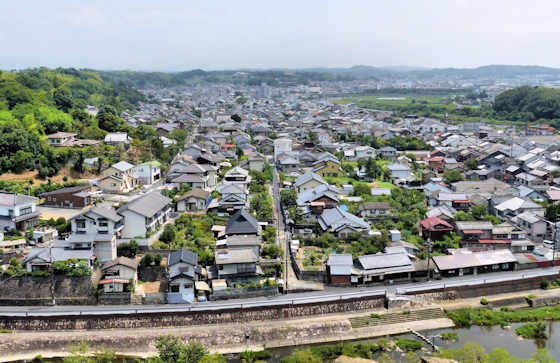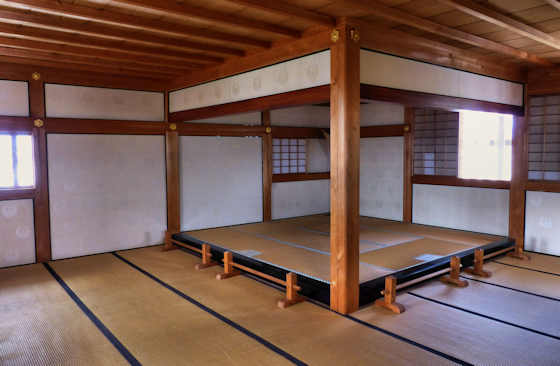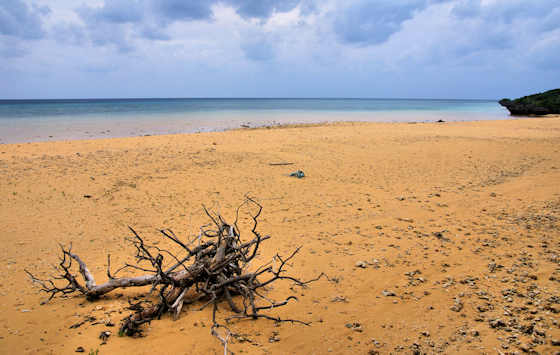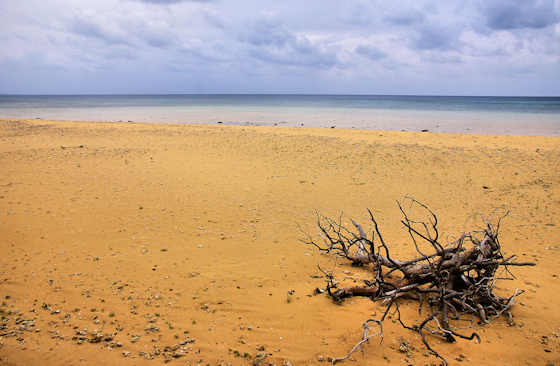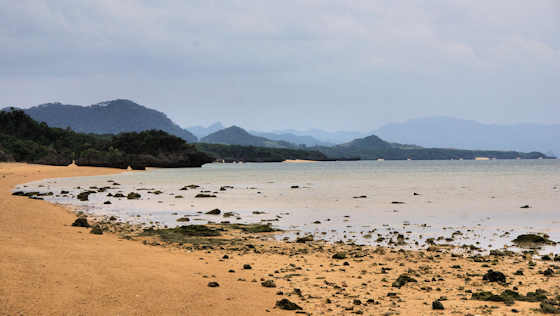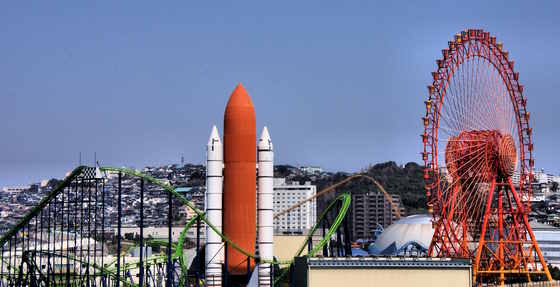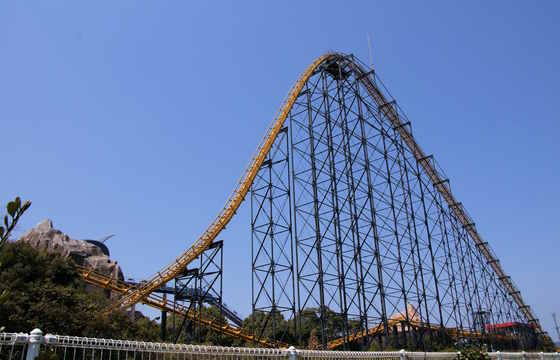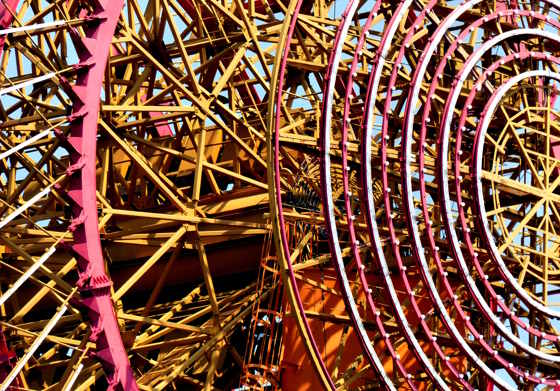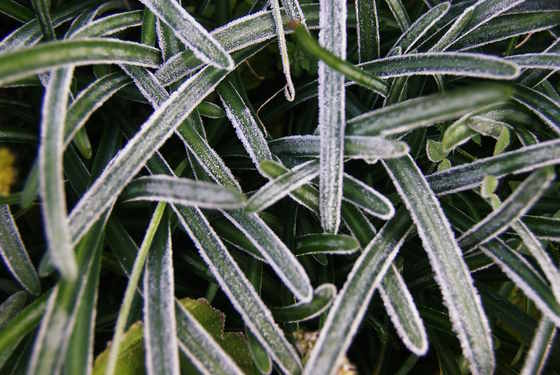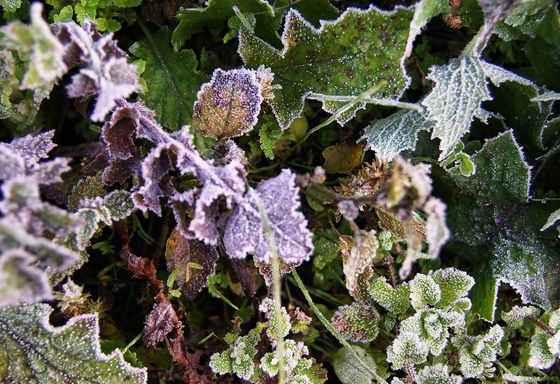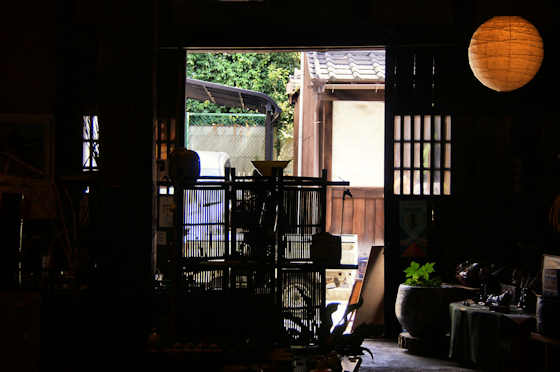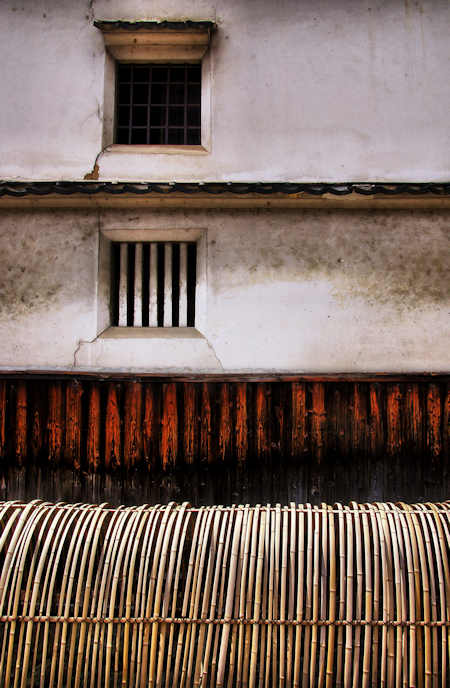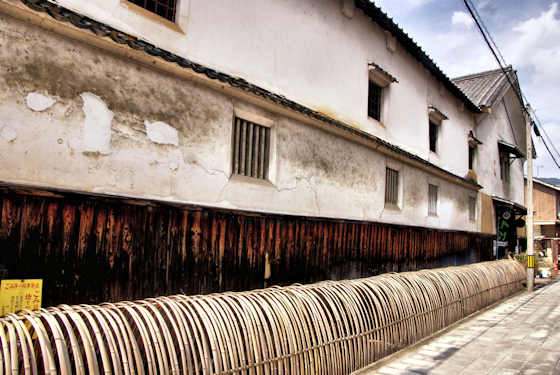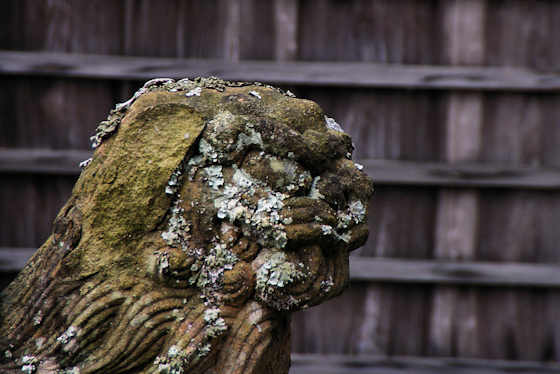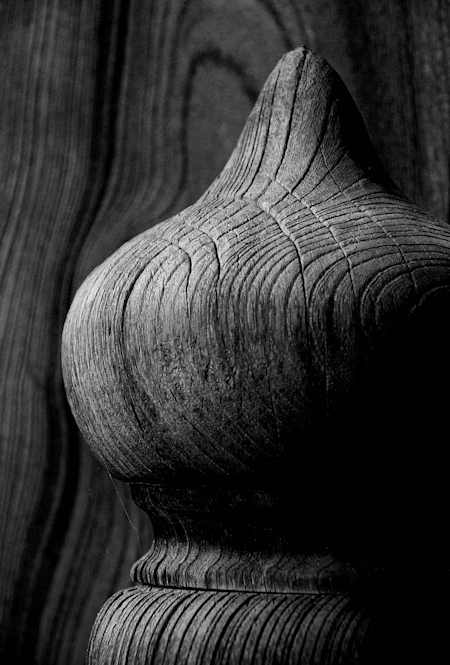Kankakei Gorge East Trail
Kankakei Gorge on Shodoshima Island is a major scenic spot of the island and included in the top 100 scenic spots of Japan. It is particularly popular in the autumn when it is a blaze of colors.
Formed by 2 million years of erosion, Kankakei, which means "cold mist valley", is home to a dramatic landscape of cliffs, spires, and strangely shaped rock formations. It is commonly viewed from the ropeway which runs for almost a kilometer and climbs about 300 meters to the top.
There are two trails for those who wish to explore the gorge, the West, or Front Trail, and the East, or Back Trail. The latter is about 3k in length and starts from the bus stop very near Hotogegataki, the 20th temple on the Shodoshima pilgrimage.
About halfway up the trail you pass underneath a huge natural arch or bridge where you can visit Sekimondo Temple, number 18 on the pilgrimage, and like Hotogegataki, a curious cave temple.
Many of the rock formations you see on the way have names, with the one below looking very much like the coffee pot rock formation near Sedona in Arizona.
As you climb the views become more and more expansive as you get closer to what is not only the highest point on the island but also the highest point in the Seto Inland Sea.
I first visited on the second day of my walk along the Shodoshima pilgrimage. The previous post in the series is Sekimondo Temple 18.
